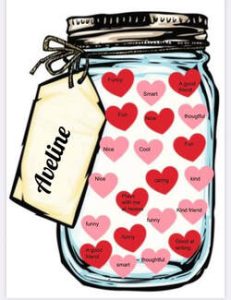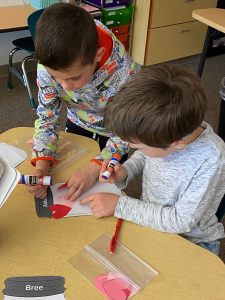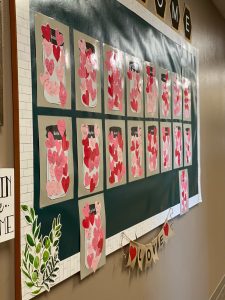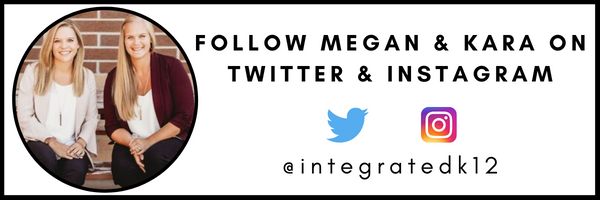TL;DR:
- Creating a positive climate and culture in the classroom should happen all year long.
- Kindness jars are a great way for students to practice SEL alongside other skills.
- It is important to take the time for kids to learn and experience kindness.
Climate & Culture: A Year-Long Process
Climate and culture are two words that you hear more and more in education. Why? It is because educators, as well as parents, community members, etc., are seeing how big of an impact a positive and relationship-centered environment can have. Oftentimes you hear of climate and culture discussed at the start of the school year. Educators strive to build those relationships with students to start the year off strong. However, we want to remind you that working on the climate and culture of your classroom does not come to a close when September ends. The work of building the climate and culture in your classroom is a continuous journey.
We need to show students how to be a light to others and how kindness can make a big impact. Share on XSpreading Love in the Classroom
Kindness Jars

Uplifting the climate and culture in our classroom with Kindness Jars. The student is writing a compliment in someone’s (digital) kindness jar.
One activity that we found that helps aid the growth of climate and culture in the classroom, typically used mid-year, is something that we call Kindness Jars.
We came across this activity from Rainbow Sky Creations, a Valentine Kindness Bundle.
Over time, we have adjusted this activity to become more of what we wanted it to be with our students. However, it is very helpful to have the templates already created! With this activity, you can choose to do it either digitally or handwritten. We have done both.
The instructions are that students are to write or type compliments/kind words to one another on a heart. One cool thing about this climate and culture activity is that you are able to integrate this social/emotional learning with writing.
You can also take the writing as far and deep as you would like! There are lots of ways that you can adjust this activity to fit what your class needs.
Kindness Jars: How to Get Started

The process it took to complete the students’ jars strengthened the climate and culture in the classroom. Here is an example of a completed digital Kindness Jar.
To get started with this activity, as a class, we created a kindness anchor chart. Students brainstormed different words that they might use to describe one another.
Then, as a class, we talked about how we know each person differently and that each heart they write for their peers should reflect their unique relationship with them. We shared some ideas with each other. As we did this, the students started to notice how good it felt to hear someone else speak kindly of them.
Students started to write on their hearts and place them in the other students’ labeled mason jars. The joy being spread amongst the students was infectious. Something so relatively simple was making a huge impact on our students.

Students working on handwritten kindness jars.
Climate & Culture: Kindness Matters
These social/emotional skills, building positive relationships with one another, and strengthening the climate and culture of our classroom didn’t come with an attached standard.
The area in which these students needed help wasn’t a specific standard that we needed to cover for any state tests. However, our students needed guidance to find joy and spread kindness.
Our world right now is being inundated with so much negativity. We need to show students how to be a light to others and how kindness can make a big impact.
[scroll down to keep reading]

 This simple activity was primarily used to promote the climate and culture in our classrooms. However, it also allowed students to work on their handwriting, spelling, writing conventions, and fine motor cutting skills.
This simple activity was primarily used to promote the climate and culture in our classrooms. However, it also allowed students to work on their handwriting, spelling, writing conventions, and fine motor cutting skills.
More importantly, it gave students the opportunity to speak kindly about someone, recognize that their words matter, show empathy towards someone, listen to others, and have a positive attitude.
Interpersonal skills (soft skills) are not something we can teach out of a book. However, we can help build and foster these skills in our classrooms by giving students time and a safe space to work on them.
Are you looking for more inspiration for your classroom? We encourage you to go check out more of the Teach Better Blog!
About Megan Diede & Kara Rigsby
Megan Diede is an educational leader, professional development expert, and current classroom teacher who has a passion to bring back the joy in teaching by improving the way instruction is being delivered in the standard classroom. Megan works with educators at all levels specializing in creating classroom learning experiences and integrated subject units to improve student success. With more than a decade of experience in the elementary classroom, she has the hands-on experience to be able to transform instructional practices.
Kara Rigsby is a professional development expert, instructional strategies specialist, forward-thinking educational leader, and current educator who strives to enhance and improve how instruction is being delivered all while increasing student growth and teacher effectiveness in the classroom. Kara works with educators at all levels specializing in curriculum mapping and developing integrated subject units to enhance student growth and teacher effectiveness. With over a decade of classroom experience, Kara has first-hand expertise in implementing innovative instructional strategies and developing classroom learning experiences that will transform the classroom of today for the students of tomorrow.


